Drop and Fluff After Breast Augmentation: When Does it Happen?
Body Plastic Surgery
Breast augmentation is a popular cosmetic procedure that helps women achieve their desired breast size and shape. The procedure involves the insertion of breast implants to enhance the size, shape, and fullness of the breasts. While breast augmentation is a relatively simple procedure, it requires adequate preparation and aftercare to ensure optimal results. One of the most important things that women need to know after breast augmentation is the concept of "drop and fluff."
"Drop and fluff" is a term used to describe the natural process of breast implants settling into their final position and shape after breast augmentation surgery. After the procedure, the breasts may appear high and tight, but as the healing process progresses, the breast implants will gradually settle into a more natural position. This process typically takes a few weeks to several months, depending on various factors such as implant type, size, placement, and individual healing rate. Understanding the concept of "drop and fluff" is crucial for women who have undergone breast augmentation, as it helps them set realistic expectations for their results and avoid unnecessary worry or anxiety during the recovery process.
This article will explore the drop and fluff process, how it occurs, and what patients can expect during the healing process.
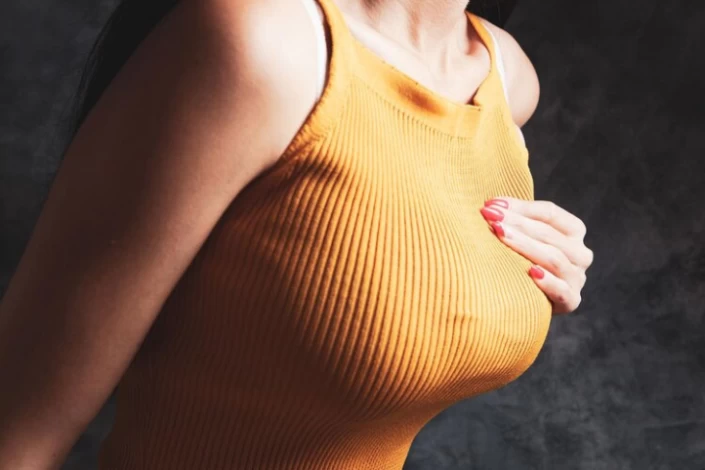
What Happens During the Drop and Fluff Process?
The dropping and fluffing process is a natural and expected part of breast augmentation healing, during which the breast implants gradually settle into a more natural position and shape. The "drop" refers to the implants descending into a more natural position on the chest, while the "fluff" describes the implants softening and taking on a more natural appearance.
Initially, the implants may appear high and tight due to swelling and the tightness of the breast tissues. Over time, the swelling subsides, and the breast tissues relax and stretch to accommodate the implants.
The implants gradually move downward and outward as the tissues relax, creating a more natural-looking breast contour. The lower pole of the breasts fills out, and the cleavage becomes more defined. The implants soften and feel more natural to the touch as the body's tissues adapt to their presence.
When Do Breast Implants Drop and Fluff?
Breast implants typically begin to drop and fluff about two to three weeks after surgery. However, the process can vary depending on several factors, such as the type of implant, size, placement, and individual healing rate. Some patients may experience the drop and fluff phase relatively early, while others may not see significant changes until several weeks or months after surgery. It is crucial to avoid comparing oneself to others, as every person’s body is unique and has a distinct healing timeline.
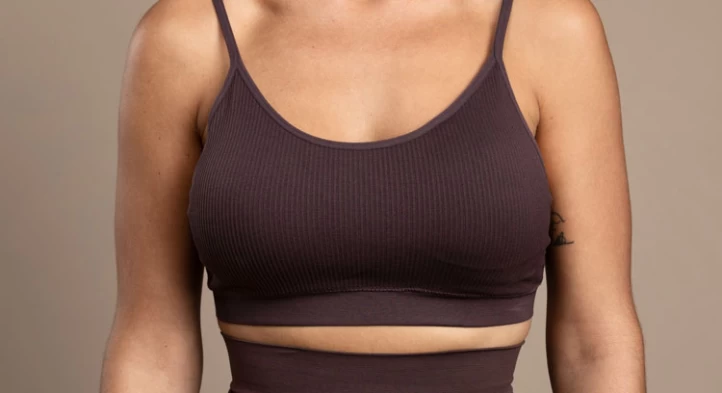
How Long Does It Take Breasts to Drop and Fluff After Breast Implants?
Breast implant drop and fluff timeline, from start to finish, can take up to a year. However, most women will see significant changes within the first 6-8 weeks.
Weeks 1-3
- Implants may appear high on the chest and slightly square;
- Swelling and tightness in the surrounding tissues are still present.
Weeks 4-5
- Implants will start to descend and soften as swelling subsides and muscles relax;
- The lower portion of the breasts will begin to fill out.
Weeks 6-8
- The implants will have settled into their final position and will start to take on a more natural shape;
- Most women will be satisfied with their breast augmentation results at this point.
Months 3-6
- The implants may continue to soften and settle slightly;
- Any remaining swelling should completely subside.
Year 1
- The drop and fluff breast augmentation is typically complete by this point;
- The final breast augmentation results should be stable and natural-looking.
How to Speed Up Dropping and Fluffing After Breast Implants?
While the drop and fluff process is a natural part of the healing process after breast augmentation surgery and can take several weeks or months to complete, there are some measures you can take to help your implants settle faster.
Wear a supportive bra
A supportive bra will help to hold your implants in place and prevent them from moving around too much. Your surgeon will recommend a specific bra to wear during the healing process. Wearing a supportive bra can help reduce swelling and discomfort. It can also help the breast implants settle into their final position more quickly.
Avoid strenuous activities
Strenuous activities can cause your implants to move around, slowing down the drop and fluff process. You should avoid lifting heavy objects and getting strenuous exercises that could strain your chest muscles for at least 4-6 weeks after surgery.

Avoid Smoking and Alcohol
Smoking and consuming alcohol can interfere with the healing process and make it take longer for your implants to settle.
Sleep on your back
Sleeping on your back will help to keep your implants from moving around too much while you sleep.
Apply gentle massage
Your surgeon may recommend that you apply a gentle massage to your breasts after surgery. This can help to break down scar tissue and encourage the breast implants to settle into a natural position more quickly.
Drink plenty of fluids
Drinking plenty of fluids will help to flush out toxins from your body and promote healing.

Follow your doctor's instructions carefully
Your doctor will give you specific instructions on how to care for your breasts after surgery. It's important to follow these instructions carefully to help ensure a smooth recovery.
What Factors Can Impact Breast Implant Drop and Fluff?
Various factors can impact the drop and fluff process after breast augmentation surgery. These factors include:
- Implant size - Larger implants may drop more quickly due to their weight;
- Implant type - Textured implants may drop more slowly than smooth implants due to friction with surrounding tissues;
- Implant placement - The surgical technique used to place the implants (submuscular or subglandular) can also influence how quickly the implants drop and fluff;
- Surgical bra - Wearing a surgical compression bra after surgery can aid in reducing swelling and shaping the breasts;
- Breast symmetry - Natural breast asymmetry can cause one breast to drop before the other following surgery;
- Time - Breasts may not heal at the same rate, leading to one breast dropping before the other;
- Skin elasticity - Patients with better skin elasticity may experience a slower drop and fluff process, while those with less elasticity may see faster changes;
- Inflammation - As inflammation decreases, breast tissues can expand, allowing implants to settle;
- Gravity - Over time, gravity's downward force can help breast implants settle into their final position.
Which Type of Breast Implant Placement is More Likely to Result in Dropping and Fluffing?
The likelihood of dropping and fluffing can vary depending on whether the implants are placed over (subglandular) or under (submuscular) the muscle.
In general, implants placed under the muscle (submuscular) are less likely to drop and fluff immediately after surgery than implants placed over the muscle (sub-glandular). This is because the muscle provides additional support and helps hold the implants in place, reducing the risk of them settling too high on the chest.
However, over time, implants placed under the muscle may experience more dropping and fluffing as the muscle relaxes, allowing the implants to settle into a more natural position. On the other hand, implants placed over the muscle may drop and fluff more quickly after surgery but may also be more prone to issues like bottoming out or double bubble deformity.
How Can the Drop and Fluff Affect the Breast Augmentation?
The drop and fluff process can affect the appearance of your breast augmentation in several ways:
- Breast Size: Your breasts may appear larger immediately after surgery due to swelling. As the swelling subsides and the implants settle, the size may appear smaller;
- Breast Shape: Initially, the implants may appear round and high on your chest. As they drop, they will take on a more natural teardrop shape.
- Cleavage: The position of your implants will affect the amount of cleavage you have. As the implants settle, you may notice an increase in cleavage.

Do Breast Implants Look Bigger as They Drop and Fluff?
It is common for breast implants to appear slightly larger as they drop and fluff. This is because the implant shifts from a high, tight position to a lower, more natural position. As the implant settles, it fills out the lower pole of the breast, which can create a fuller, rounder appearance, making it appear slightly larger. However, the actual size of the implants does not change during the drop and fluff process.
What Happens If Your Implants Do Not Drop?
Breast implants will often drop and fluff naturally within the first few months after surgery. However, there are some cases where implants may not drop or drop as expected. This can be due to several factors, including:
The size and shape of the implants
Larger implants may take longer to drop than smaller implants, and implants with a more teardrop shape may drop more naturally than implants with a rounder shape. Also, silicone implants may take longer to drop and fluff than saline implants because the silicone gel is thicker and may take longer to settle into place.
The amount of natural breast tissue
Women with more natural breast tissue may experience a faster drop and fluff process than women with less natural breast tissue.
The placement of the implants
Breast Implants placed under the muscle may take longer to drop than implants placed over the muscle.
Scar tissue formation
The formation of scar tissue around the breast implants can prevent them from dropping properly.
Capsular contracture
Capsular contracture is when scar tissue tightens around the implant, causing it to harden and become painful. This can prevent the implant from dropping and can distort its shape.
Massage techniques or additional surgical intervention may sometimes be necessary to encourage the implants to drop into the desired position. If you have concerns about the position of your breast implants after surgery, consult with your plastic surgeon. They can guide you through the best action to address issues and ensure optimal results.
What Are the Signs of Breast Implant Complications After Drop and Fluff?
After the drop and fluff process, it's important to be aware of potential signs of complications. Some signs of breast implant complications after the drop and fluff period may include:
- Persistent pain or discomfort in the breasts;
- Unusual or significant changes in breast shape or size;
- Asymmetry between the breasts;
- Visible rippling or wrinkling of the implants;
- Hardening or firmness of the breasts (capsular contracture);
- Changes in nipple sensation;
- Persistent swelling, redness, or warmth in the breast area;
- Implant malposition or rotation;
- Noticeable palpable lumps or masses in the breast.
It's important to monitor for any of these signs and promptly consult a qualified plastic surgeon if you experience any concerning symptoms.
Why Breast Implant in Iran?
Breast implant surgery, also known as breast augmentation, is a common cosmetic procedure in Iran, as it is in many other countries. Iran is known for its highly skilled plastic surgeons who have extensive experience and training in performing breast implant surgeries. Many Iranian plastic surgeons have trained internationally and are well-versed in the latest techniques and advancements in the field.
Iranian medical facilities are equipped with modern technology and adhere to high standards of care. Patients can expect high professionalism and attention to detail throughout their treatment.
The cost of breast implant surgery in Iran is also more affordable compared to many Western countries, making it an attractive option for individuals seeking high-quality care at a lower cost. In Iran, the average cost of breast augmentation is $3,000, encompassing expenses such as consultations with the surgeon, the clinic facilities, anesthesia, post-operative recovery, and follow-up visits.
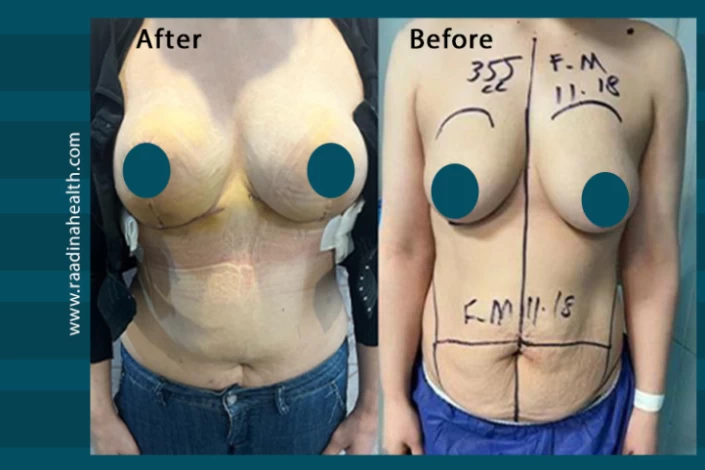
The Bottom Line
Understanding the concept of "drop and fluff" is essential for anyone considering or undergoing breast augmentation. This natural process, in which the implants settle and the surrounding tissues adjust, is crucial in achieving the desired final result.
By comprehending the timeline and potential changes associated with "drop and fluff," patients can set realistic expectations and feel more confident throughout their breast augmentation recovery journey.
FAQs About “Drop and Fluff” After Breast Augmentation
1) What is the Difference between breast implant drop and fluff vs. breast implant rotation?
Drop and fluff describe the natural settling and adjustment of the implants and breast tissues, while implant rotation refers to a potential issue where the implant shifts or turns within the breast pocket.
2) What is the best type of breast implant placement for long-term drop and fluff?
The best type of breast implant placement for long-term drop and fluff will depend on factors such as your specific anatomy, desired aesthetic outcome, and any existing breast tissue or muscle considerations. Your plastic surgeon can assess your needs and help you make an informed decision about implant placement based on these factors.
3) Will my implants move closer together as they drop and fluff?
As breast implants "drop and fluff" over time, they may settle into a more natural position and shape. This can sometimes result in the appearance of the implants moving slightly closer together. However, the extent to which this occurs can vary depending on the size and type of implants, the patient's anatomy, and the surgical technique used.
4) Is drop and fluff painful?
The drop-and-fluff process is not typically painful, referring to breast implants' natural settling and softening over time. However, some discomfort or mild pain may be experienced during the initial post-surgery period as the body adjusts to the implants and the surrounding tissues heal. Pain medication usually manages this discomfort, which tends to subside as the healing progresses.
5) Can one breast implant drop faster than the other?
One breast implant can drop and settle into its final position faster than the other. This can occur for various reasons, including differences in each breast's natural anatomy, variations in tissue elasticity, differences in muscle tightness, and variations in the surgical technique used for each breast.
Factors such as the size and weight of the implants and variations in the healing process can also contribute to differences in the rate at which each breast implant drops and fluffs.
 WhatsApp
WhatsApp
 Telegram
Telegram
 Facebook
Facebook
 Email
Email


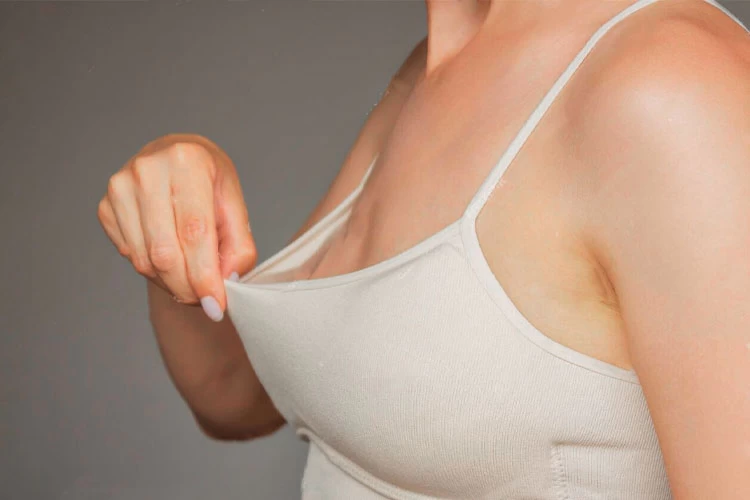




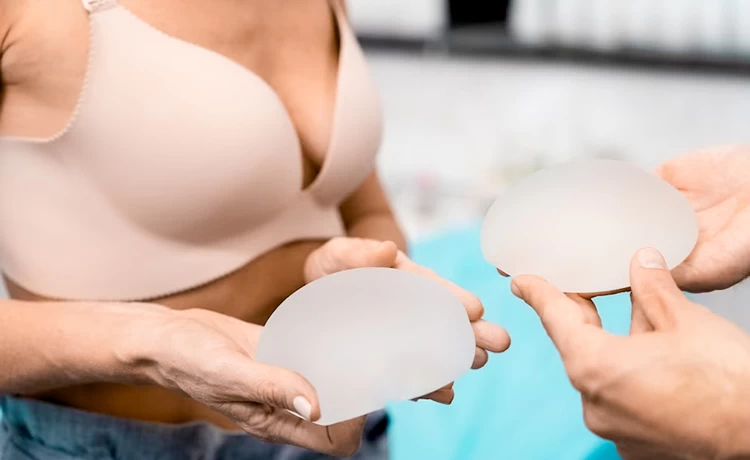

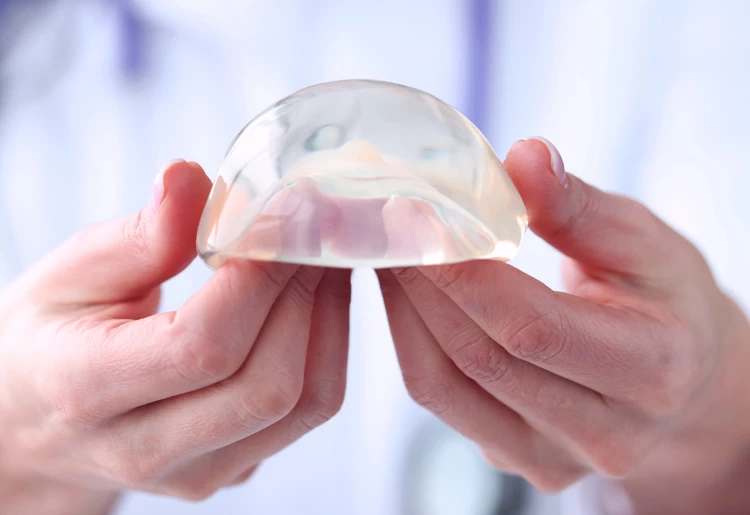
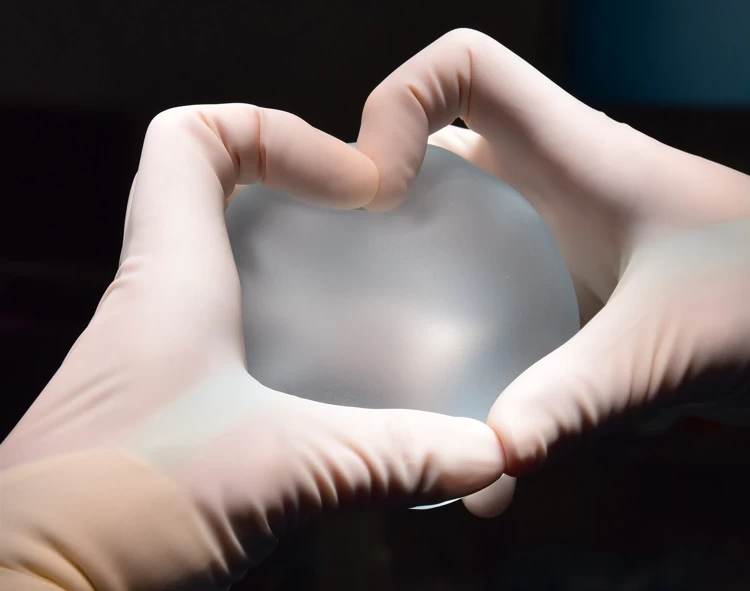
User
-What if one breast implant isn’t dropping?
Habib Ebrahimi
-Hello dear friend,
It is common for breasts to have slight asymmetry, leading to one breast implant dropping faster than the other after surgery. Typically, the implant in the breast with more space between the nipple and breast crease will settle first.
To facilitate this process, your plastic surgeon may recommend wearing a breast band or similar garment to help guide the implants down. Also, gentle massage techniques can help alleviate tightness and promote breast relaxation.
Monitor the progress of your implants closely during this period. If any concerns arise, especially after six weeks post-surgery, it is essential to seek guidance from your surgeon. In rare cases, forming a hard scar tissue capsule around an implant may necessitate intervention.